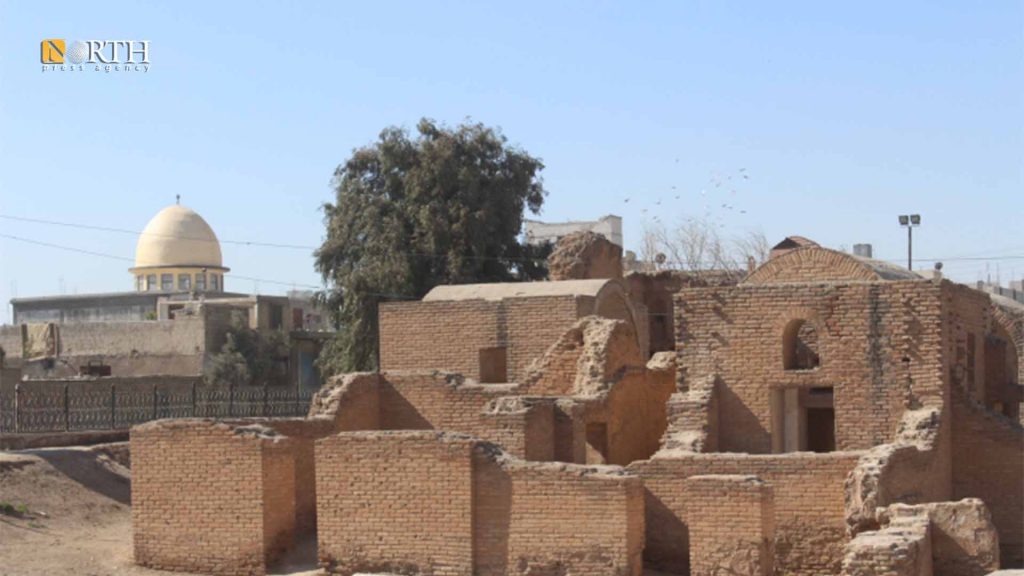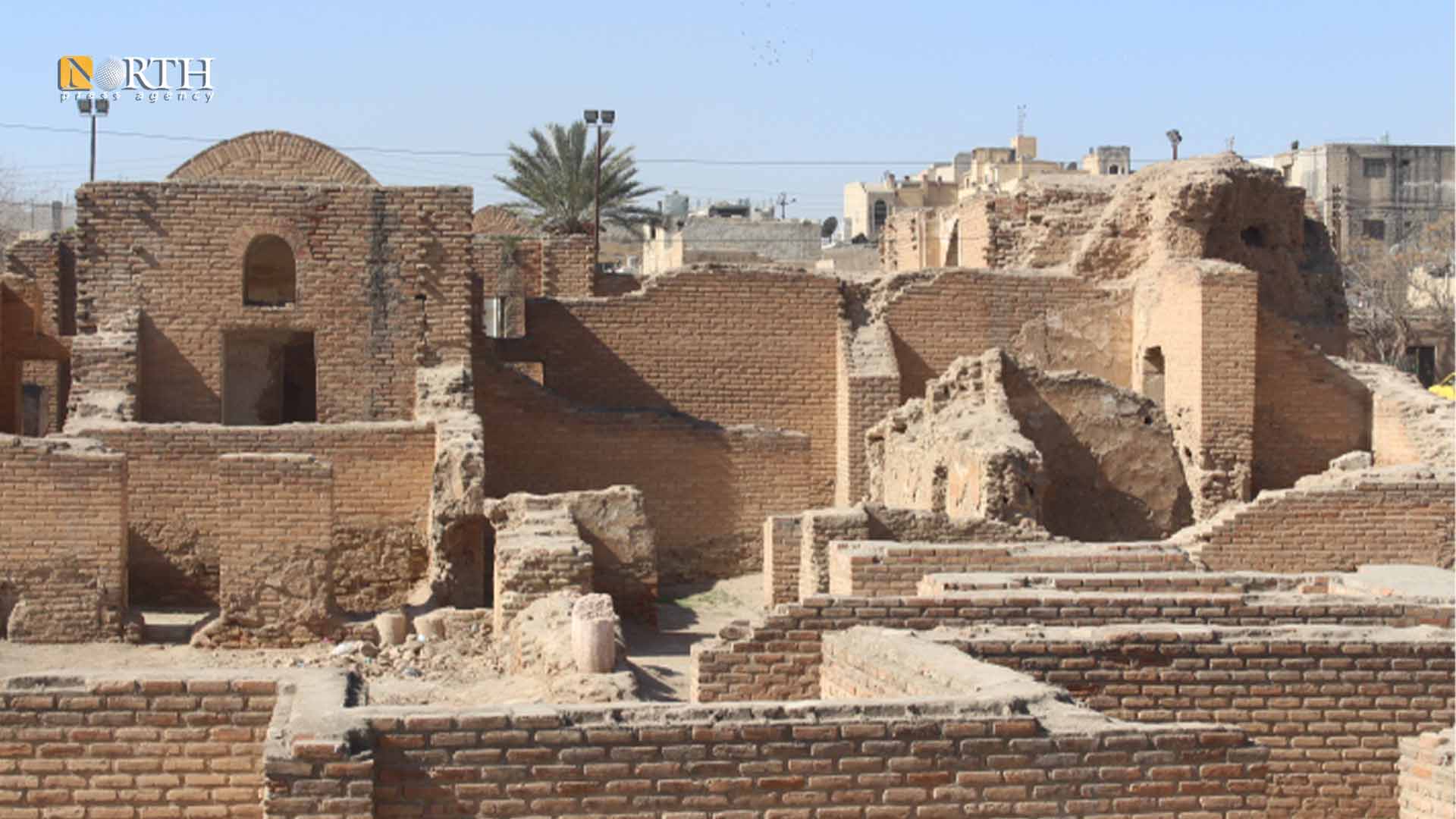RAQQA, Syria (North Press) – Four years after the expulsion of the Islamic State organization (ISIS) from the city of Raqqa, northern Syria, scenes of destruction caused by the war are still visible on the archaeological site of Qasr al-Banat (Girls castle or Palace of the Ladies), as the lower and upper parts of the palace walls are damaged and its fountain is completely destroyed, in addition to the traces of random excavation and humidity that caused some deformation.
The archaeological sites in Raqqa including Qasr al-Banat, were subjected to significant damages and encroachments due to the military operations between 2012 and 2017.
The palace is located in the southeastern side of Raqqa, and is known as the Qasr al-Banat or the Abbasid Palace, while others call it the Palace of the Virgins.

The palace is located about 400 meters north of the archaeological site Bab Baghdad, east of the city. It is one of the most important archaeological sites in Raqqa. It was built in 772 AD, the same date of the city’s construction. It was built of plaster and dry mud.
The size of the palace is 3,000 meters, and as a result of an architectural incident in Raqqa in the eleventh century, it was destroyed and rebuilt again.
Violations and destruction
Muhammad al-Izzo, the curator of the Raqqa Museum and an antiquities researcher, said the palace suffered many damages during the ISIS era including secret excavations that the organization was conducting inside with the aim of building fortifications and searching for archaeological landmarks under the palace grounds.
The organization put several fuel tanks inside the palace, in addition to excavate the palace-bases, from which the walls were damaged and collapsed, according to al-Izzo.
He indicated that the upper walls of the palace collapsed, due to the sound of the explosions and the air pressure.
The Palace consists of a central courtyard overlooked by four courtyards. There is a main entrance in the south, and a hall behind, with two rooms in each side in the far north. The hall overlooks a courtyard and two porticoes.
The palace, which was a medical teaching center, contains meeting rooms and study laboratories belonging to the students.
In 2014, ISIS controlled the city of Raqqa, and the Syrian Democratic Forces (SDF) managed to expel it from the city on October 17, 2017, after battles that lasted one hundred and sixty-six days.
During their control of Raqqa, ISIS members randomly excavated some archaeological sites, while some of them turned into military points and tunnels, according to the Culture and Antiquities Committee.
No possibilities for restoration
Before 2012, Raqqa witnessed archaeological excavations and foreign and local expeditions with the intention of excavating its antiquities and studying its sites and the history of the civilizations that passed through it.
But these campaigns and missions have stopped since the start of the war in Syria, according to archaeological researchers in Raqqa.
Al-Izzo stressed the necessity of restoring the palace and working on restoring it well before the rains, which will increase humidity in the walls.
Previously, the restoration work of the palace by the Antiquities Committee was limited to filling in the lower pits left by ISIS members, and emergency restoration of the upper walls and the western corner, according to the curator of the Museum.
According to the Culture and Antiquities Committee of the Raqqa Civil Council, more than 100 archaeological sites in Raqqa are currently in need of restoration.
Khitam al-Abdullah, co-chair of the Culture and Antiquities Committee of the Civil Council in Raqqa, attributed the reason for not restoring the site to the lack of capabilities and the weak financial budget allocated to the committee.
However, she said that there is a plan and a study at the present time regarding the complete rehabilitation of the palace, without specifying the date of implementation of the project.

